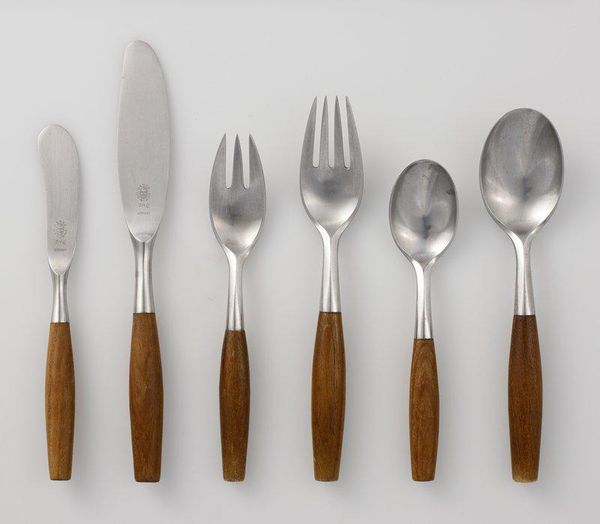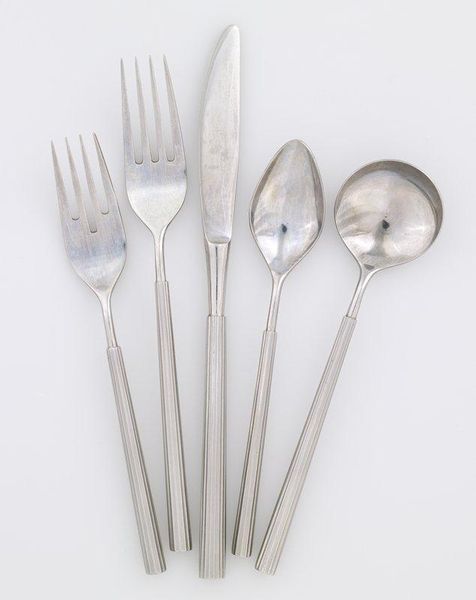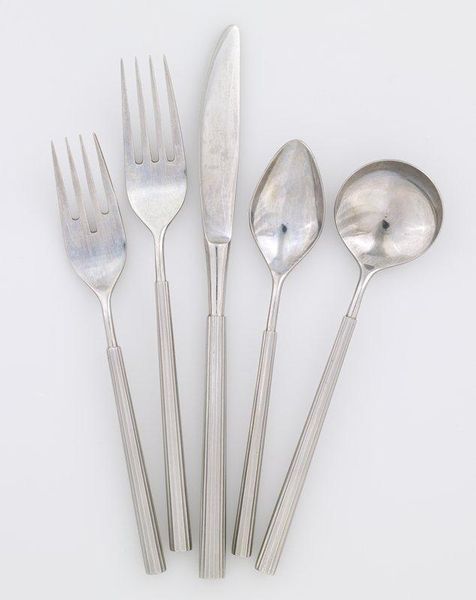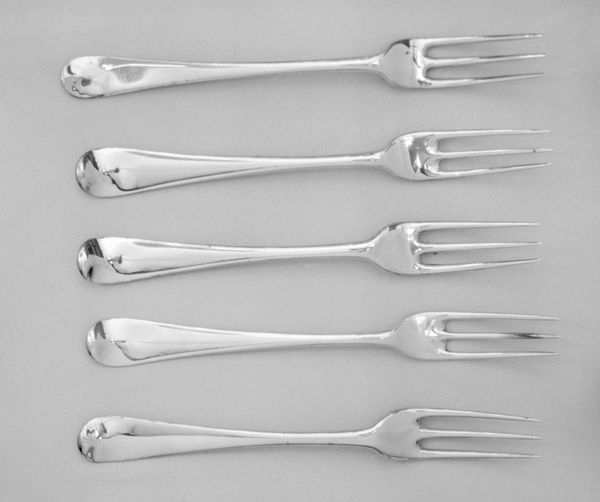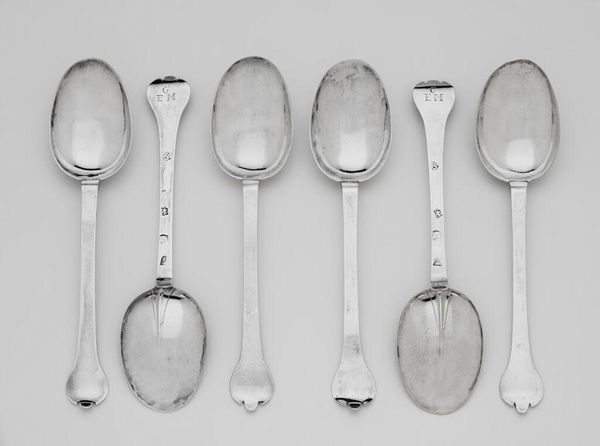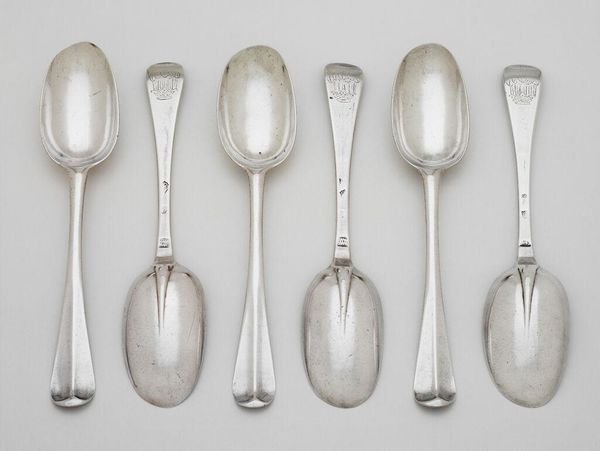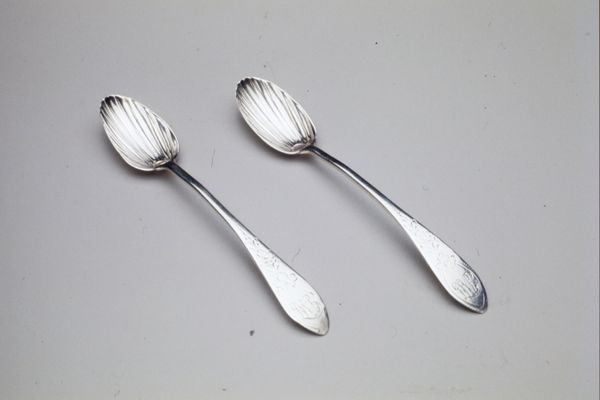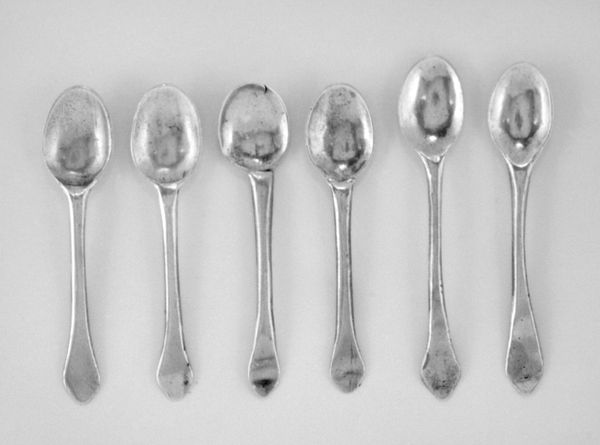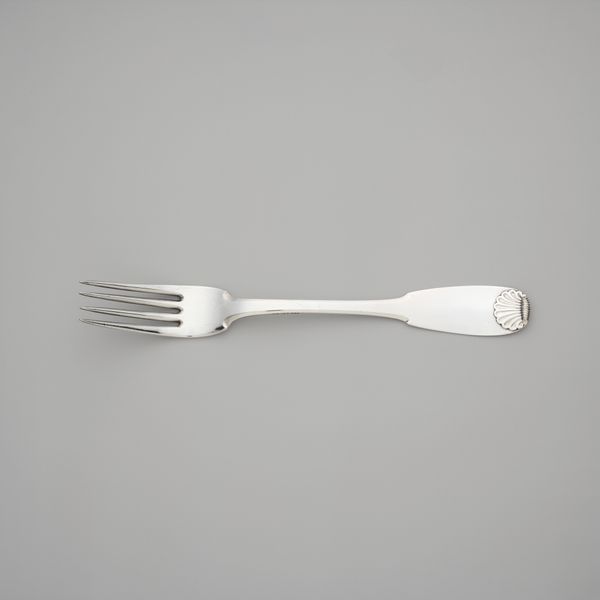
silver, metal, metalwork-silver, sculpture
#
neoclacissism
#
silver
#
metal
#
metalwork-silver
#
sculpture
#
decorative-art
Dimensions: Length: 7 3/4 in. (19.7 cm)
Copyright: Public Domain
This knife, part of a larger dining service, was made of silver by Pierre-Benoît Lorillon in France, sometime in the early 19th century. The gleaming surface speaks to the high value placed on silverware during this period, when dining became an important marker of social status. Note how the material has been shaped. Silver is a relatively soft metal, so it can be worked by hand using tools like hammers, files, and polishing cloths. The knife would likely have begun as a flat ingot, then gradually formed into its elegant shape. Consider the amount of labor required to create a single piece of silverware. The silversmith needed to be highly skilled, of course, but there were also many other people involved: the miners who extracted the silver from the earth, the merchants who transported it, and the artisans who made the tools used in the process. Recognizing these extensive networks of production helps us to understand the cultural significance of this seemingly simple object. It's not just a knife, but a symbol of wealth, status, and the complex social relations of the time.
Comments
No comments
Be the first to comment and join the conversation on the ultimate creative platform.
